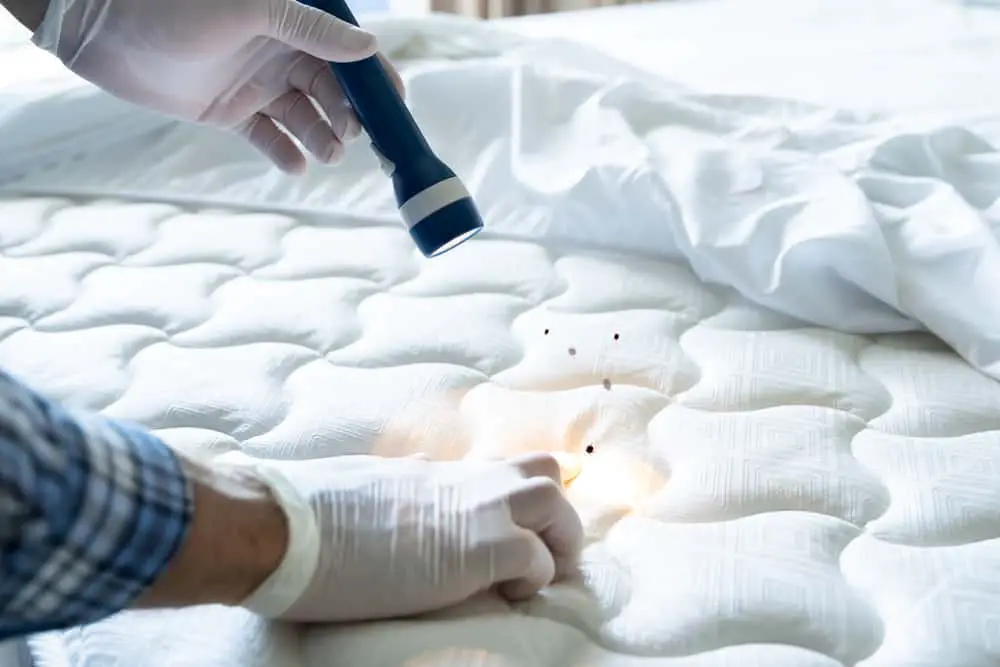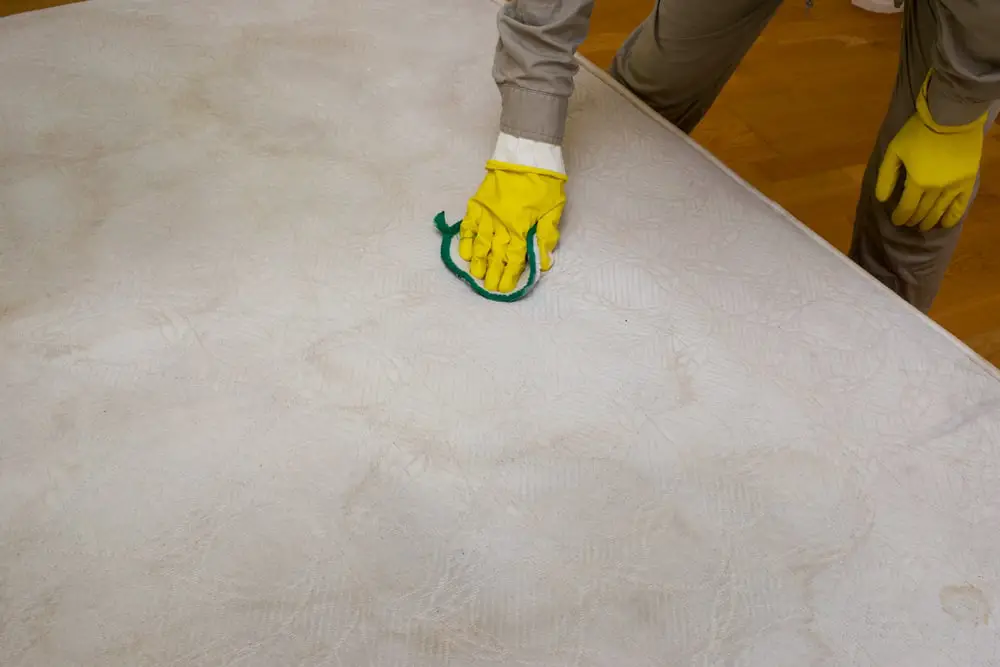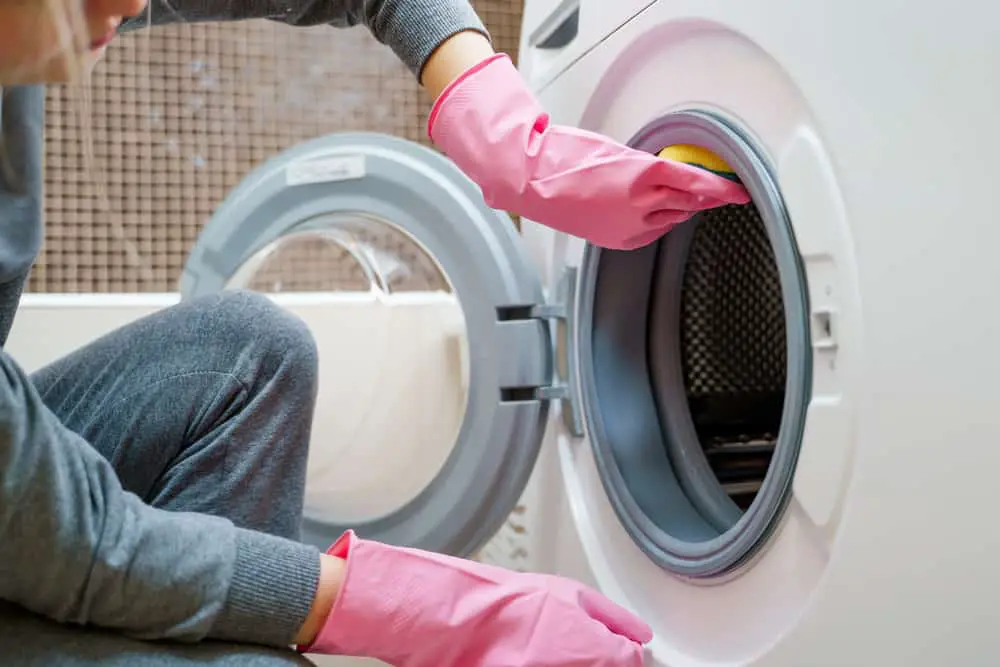Bed bugs are a common and frustrating nuisance that can make their way into various home items, including your washing machine.
These little pests can survive in many environments, and it’s crucial to get rid of them effectively. A key component to eliminating bed bugs is ensuring that your washing machine is clean and free of infestation.
Cleaning your washing machine after bed bugs might not be something you’ve ever thought you’d need to do. However, it’s an important task. Washing machines are usually the first place you’d think to clean your bed bug-infested clothes and linens. However, without adequately cleaning the appliance itself, you may be allowing these pests to persist.
With the right cleaning methods and a little persistence, bed bugs can be eradicated from your home. Let’s explore how to clean your washing machine and restore peace to your home.
Identifying Bed Bug Infestation

Signs of Bed Bugs
Bed bugs are small, flat, oval-shaped insects that feed on human blood. They are usually brown or reddish-brown and are about the size of an apple seed. To identify a bed bug infestation, you can look for the following indicators:
- Small black fecal spots on your mattress, sheets, and pillowcases.
- Tiny, pearl-white eggs (about 1mm in size) are often found in crevices, seams, and folds.
- Shed bed bug skins that are usually pale yellow and may be seen near hiding spots.
- Blood stains on your sheets and pillowcases from feeding.
Checking Furniture and Household Items
Bed bugs like to hide in small cracks and crevices in your bedroom furniture, curtains, and other household items. Therefore, it’s essential to inspect these areas thoroughly. Some tips for doing so include:
- Headboard: Remove and check the back of your headboard for any signs of bed bugs.
- Mattress: Inspect the seams, folds, and edges of your mattress for eggs or bugs.
- Curtains: Examine the top of your curtains and the surrounding curtain rod for any signs of these pests.
- Cracks and crevices: Use a flashlight to look for any signs in the corners of your room, furniture joints, and any other small spaces.
Bed Bug Bites and Welts
One of the telltale signs of a bed bug infestation is the appearance of bites. Bed bug bites may resemble flea bites or ticks, but they are distinct in several ways:
- They usually occur in small clusters or zigzag lines on your skin.
- Bed bug bites are often found on exposed skin areas like your arms, legs, and face.
- The bites tend to appear as red, inflamed welts that might itch or burn.
If you suspect a bed bug outbreak in your home, it’s crucial to call an exterminator who can conduct a thorough inspection and recommend appropriate insecticides.
DIY methods may not be powerful enough to eliminate the entire infestation, so it’s essential to consult with professionals. Remember, bed bugs are excellent hitchhikers and can easily spread to new locations, so swift action is necessary to stop the infestation.
Preparation for Cleaning
Before you begin cleaning your washing machine to eliminate bed bugs, there are necessary steps to take to ensure a successful and thorough process. In this section, we will discuss the following sub-sections: Removing Infested Items, Separating Clothes, and Protecting Uninfested Items.
Removing Infested Items
First, identify and remove all items that may be infested with bed bugs. This includes bedding, linens, pillows, clothing, and even stuffed animals. Place the infested items in sealed plastic bags to prevent bed bugs from spreading to other areas of your home.
If possible, also consider using a vacuum to remove bed bugs from surfaces such as carpets and mattresses. Dispose of the vacuum bag properly by placing it in a sealed bag and throwing it away in an outdoor trash receptacle.
Separating Clothes
When dealing with a bed bug infestation, it’s essential to separate your clothes and fabrics to avoid contamination. Create three piles: one for clothes that need washing, one for those that need dry cleaning, and one for items that can’t be washed or dry cleaned, such as shoes and luggage.
Laundering clothes in hot water and drying them at high temperatures will help kill bed bugs and remove their stains. For delicate clothing and fabrics, consider using a steamer or taking them to a professional cleaner.
Protecting Uninfested Items
To keep uninfested items safe from bed bugs, store them in sealed plastic bags or containers until the infested items have been treated and the bed bugs eliminated.
For larger items like mattresses and carpets, use mattress covers or plastic sheeting to create a barrier between the item and any potential bed bugs. Additionally, refrain from placing clothing or luggage on the floor, as this can increase the likelihood of bed bugs infesting these items.
Washing Infested Clothes and Bedding
When dealing with a bed bug infestation, it’s essential to thoroughly clean your clothes and bedding to prevent the bugs from spreading further.
Using High Heat
To effectively kill bed bugs, it’s crucial to use the highest heat setting on your washing machine and dryer. Bed bugs are unable to survive high temperatures; exposing them to heat above 120°F (49°C) for an extended period can effectively eliminate them. To ensure all bed bugs are killed, wash your infested clothing, linens, blankets, and laundry in hot water.
Similarly, when drying your clothes, opt for the highest heat setting on your dryer to eliminate any remaining bed bugs. It’s also a good idea to run the dryer for an additional 15-20 minutes after the clothes are dry, just to be sure.
Choosing the Right Detergent
Although using hot water and heat treatment can be effective, combining these methods with a suitable laundry detergent can offer better results. When dealing with bed bugs, it’s best to choose a detergent that can effectively break down excrement and other residues from the bugs.
- bed bug detergent
- bed bug laundry
- bed bugs
Look for products specifically designed to treat bed bug infestations or ones known to have a strong cleaning power. In addition, some laundry detergents contain preventative measures that can help repel bed bugs in the future.
Washing and Drying Techniques
To ensure the most effective treatment for bed bugs, follow these washing and drying techniques:
- Pre-Treatment: Before placing your clothes and bedding in the washing machine, shake them out to dislodge any bed bugs. You may wish to do this outside or at a laundromat to avoid spreading the infestation in your home.
- Load Type: Whether you have a front load or top load washing machine, avoid overloading it to ensure all items are thoroughly cleaned. It’s essential for the hot water and detergent to fully penetrate each item in the washer.
- Deep Clean Your Washing Machine: After treating your infested laundry, it’s essential to deep clean your washing machine to prevent any bed bugs from lingering. Use a washing machine cleaner or tablet specifically designed for this purpose. Alternatively, you can run a cycle with hot water, detergent, and a cup of white vinegar to cleanse your washer.
Following these guidelines will help you effectively clean your washing machine and items infested with bed bugs, giving you peace of mind during this challenging situation.
Cleaning the Washing Machine
Using Heat and Steam
To clean your washing machine after a bed bug infestation, using heat and steam is an effective method. Bed bugs are sensitive to heat and cannot survive in hot environments. Start by washing your clothes in hot water, ideally at a temperature of 60°C/140°F or higher, as this will help eliminate any remaining bugs or eggs.
Next, give your washing machine a thorough steam cleaning. Steam cleaning can reach into various hiding spots inside the machine, killing any remaining bed bugs. A handheld steamer can be used to clean both top-load and front-load washing machines, ensuring that the high heat penetrates all crevices and spaces where bed bugs may be hiding.
Applying Washing Machine Cleaner
Another important step in cleaning your washing machine is using a specialized washing machine cleaner. These products are specifically designed to remove any build-up of mold, mildew, and other residues that may harbor bed bugs.
Choose a washing machine cleaner in tablet or liquid form and follow the instructions on the product. Be sure to clean all parts of the machine, including the drum, detergent dispenser, and any filters. For a thorough deep clean, you may need to run a few cleaning cycles with the washing machine cleaner to ensure all unwanted residues and bugs are removed.
If you prefer using a natural alternative, you can use a mixture of equal parts vinegar and hot water to clean your washing machine. Additionally, you can add a cup of bleach during the cleaning cycle to help disinfect the machine and eliminate any remaining bed bugs.
Preventive Maintenance
Keeping your washing machine clean and bug-free involves regular preventative maintenance. Some useful tips for preventing bed bug infestations in washing machines include:
- Regularly inspecting your laundry for signs of bed bugs and treating any infested items promptly
- Running a monthly deep cleaning cycle with a washing machine cleaner
- Setting a high heat drying cycle for clothes, as this will help kill any bed bugs and eggs that may have survived the washing process
- Frequently vacuuming and steam cleaning the area around your washing machine to prevent bed bugs from finding a hiding place nearby
Treating the Rest of the House

Cleaning Furniture and Surfaces
When dealing with bed bugs, it’s essential to clean all furniture and surfaces in your home. For items like your mattress, couch, and headboard, use a steam cleaner to reach high temperatures and effectively kill bed bugs and their eggs. Pay special attention to seams and crevices, as these are common hiding places for bed bugs.
For blankets, curtains, and infested clothes, put them in trash bags and seal them tightly. Wash these items on the highest heat setting possible, and then dry them using a dryer cycle to ensure the bed bugs are eliminated.
Vacuuming Floors and Carpets
Regularly vacuuming your floors and carpets is a crucial step in treating a bed bug infestation. Be thorough when vacuuming, paying extra attention to areas around the bed frame, along baseboards, and around furniture.
Once you have finished vacuuming, it’s essential to empty the vacuum’s contents into a sealed bag and dispose of it properly to prevent any bed bugs from escaping.
Considering Professional Help
If you’re struggling to control a bed bug infestation, it might be time to consider professional help. Pest control experts can identify signs of bed bugs and apply the appropriate treatment, which may include insecticides or heat treatments. Getting assistance from a professional can save you time and ensure a successful resolution to the problem.




